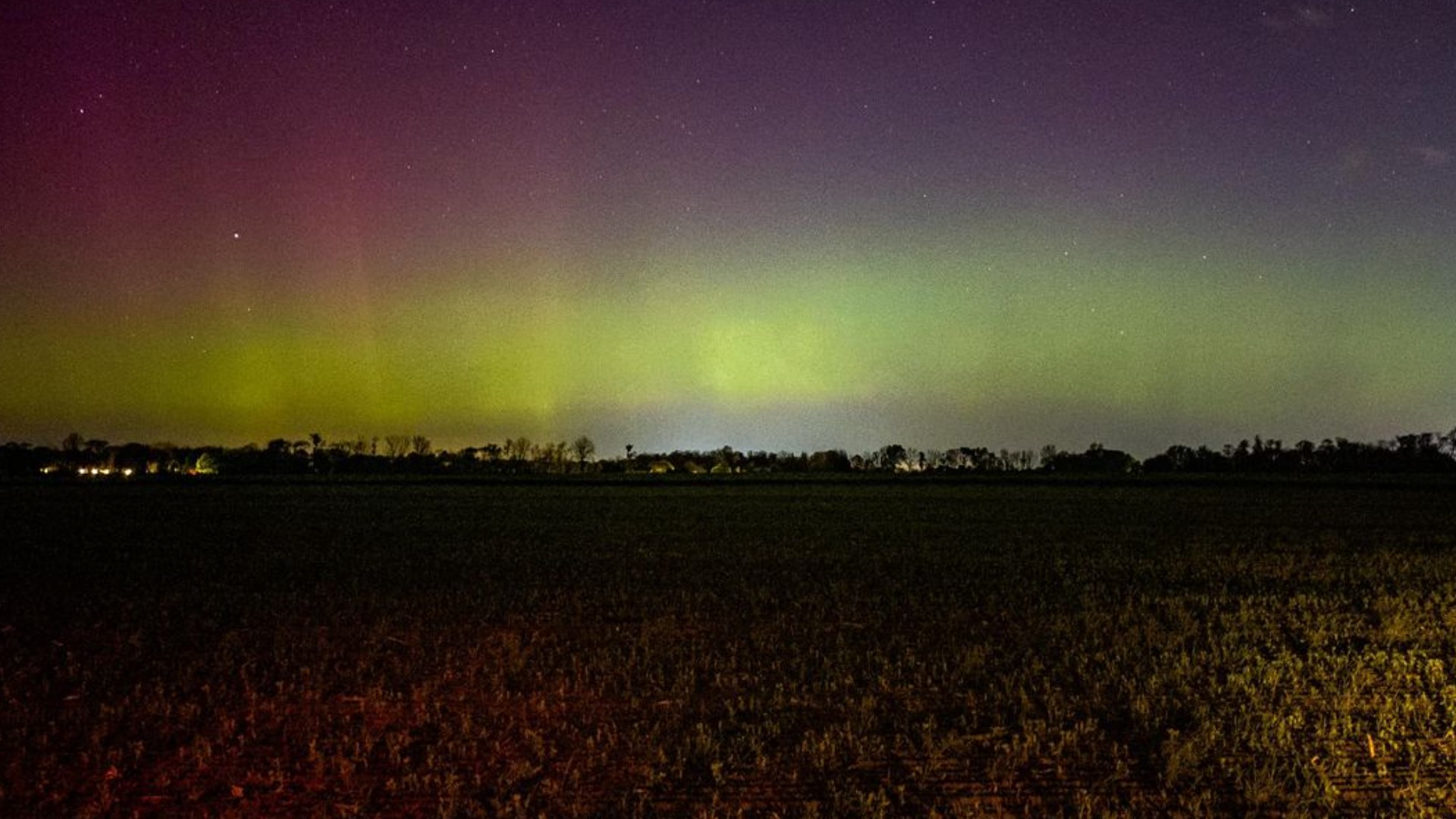PENNSYLVANIA, USA — It’s time for another Weather Rewind, where we look back at this week’s past weather with a twist.
This week, we’re looking back at a beautiful and uncommon sight for us in the night sky last Sunday!
The northern lights made an appearance for many.
The colorful phenomenon was spotted in many uncommon areas, even here in Pennsylvania!
LET’S REWIND!
Check out the gorgeous time lapse from the United Kingdom in the video above.
The northern lights—also known as the aurora borealis—dipped further south than usual and gave stargazers this uncommon and dazzling view!
An extra powerful solar storm last Friday traveled toward Earth, and when it arrived Sunday night, the auroras dipped as far south as central California, Arizona and southern England!
In fact, thirty states in total could see the incredible colors if the clouds didn’t interfere with viewing!
That includes surrounding states like New Jersey and New York.
And yes, even here in Pennsylvania!
Here's a beautiful picture taken in nearby Berks County by storm chaser Justin Selig:

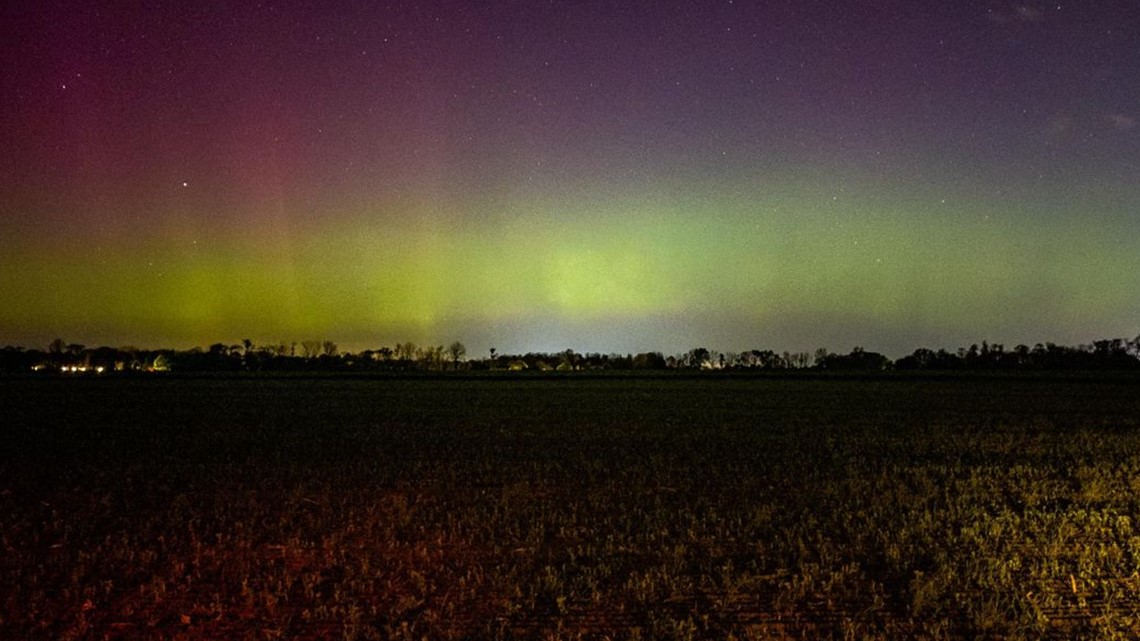
This is something that only happens about 100 times in 11 years!
But what causes the northern lights and why was it able to stretch so far?
WHAT’S HAPPENING
The process begins when the sun lets off a burst of energy.
This is called a coronal mass ejection or CME.

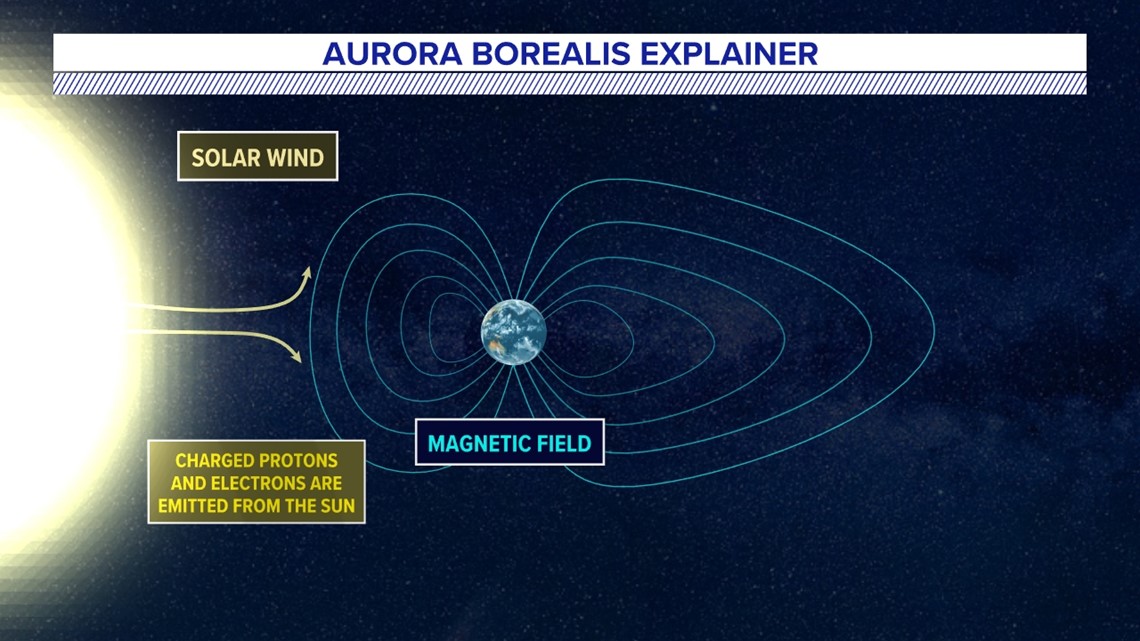
Charged protons and electrons travel through space and interact with the Earth’s magnetic field. They follow the magnetic field and can enter Earth’s atmosphere where it’s weakest—at the poles.
That’s why the northern lights generally favor the polar regions.

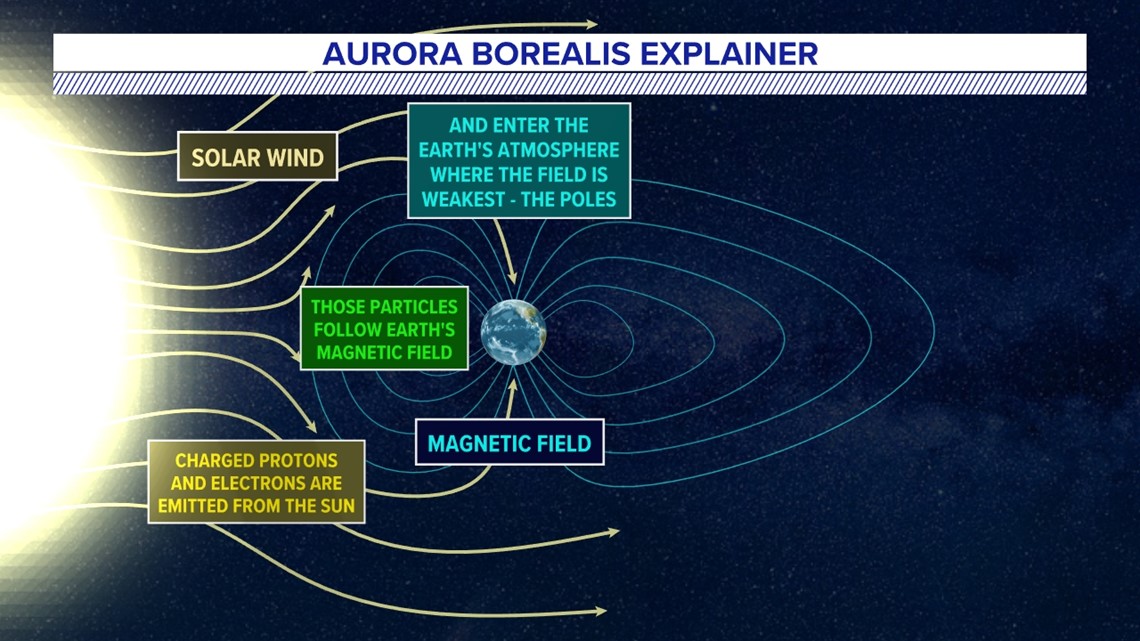
The electrons collide and interact with various particles in the atmosphere to create the beautiful colors.
These colors are determined by the height and the type of the molecule.
Oxygen molecules above 200 kilometers help create red auroras, nitrogen molecules between 100 to 200 kilometers form blue auroras and oxygen between 100 to 200 kilometers contribute to the formation of green auroras.
Below 100 kilometers, nitrogen molecules can make pink auroras.

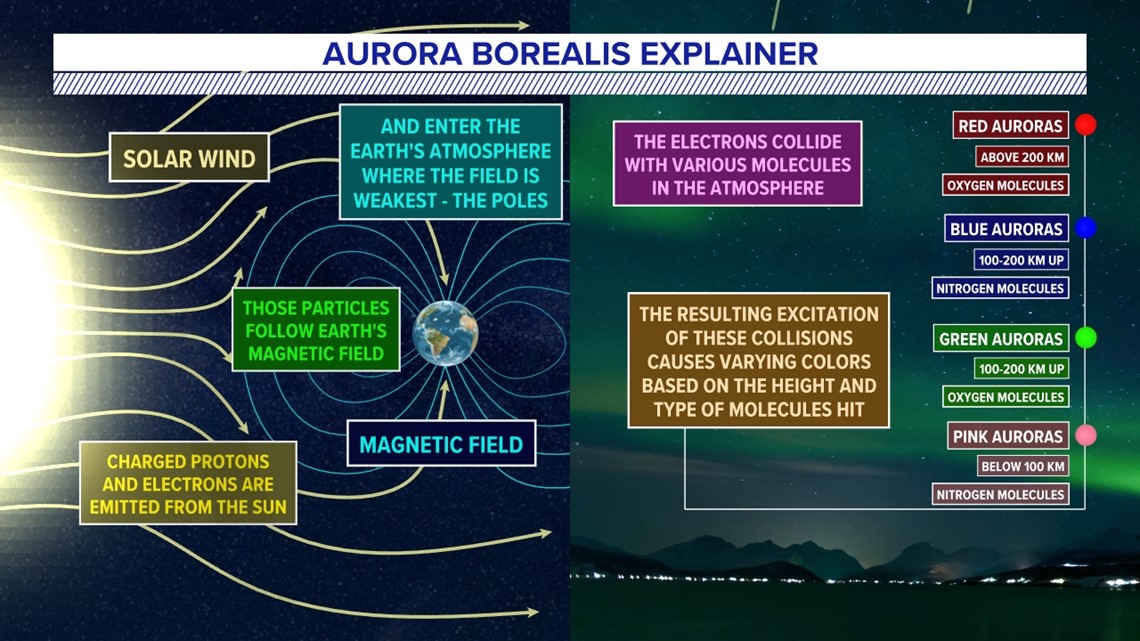
A larger burst of energy from the sun enhanced this process, and that pushed the charged particles far enough below the polar regions so we could see the lights!
Stay tuned for all the “whys” behind the weather wonders that capture our attention each week.

